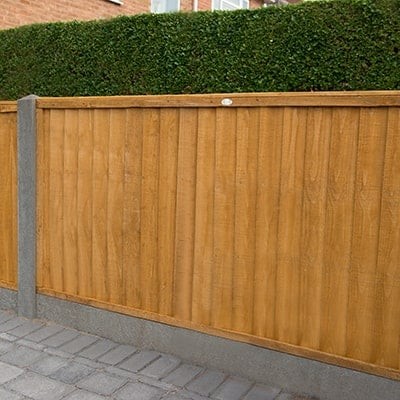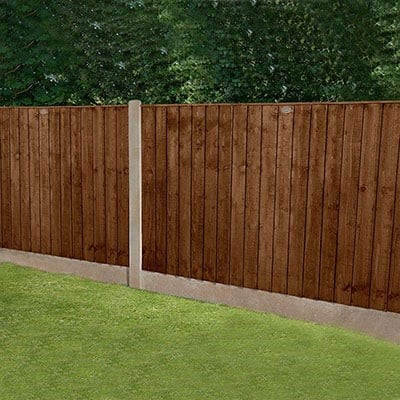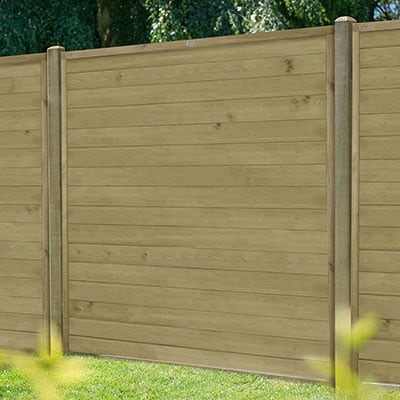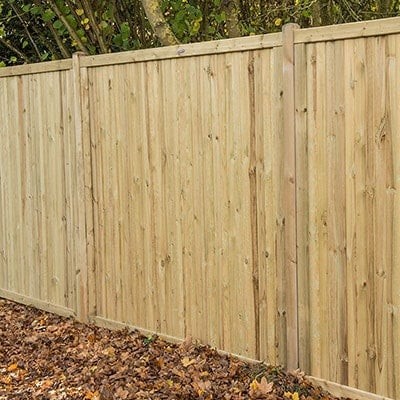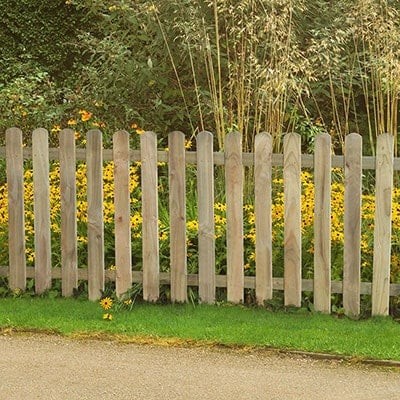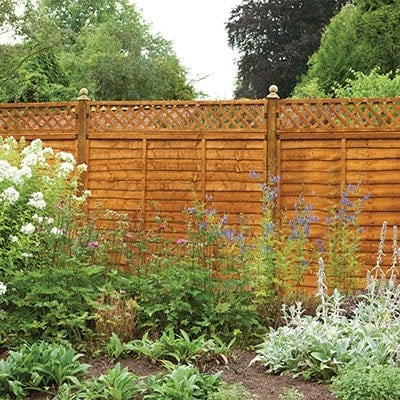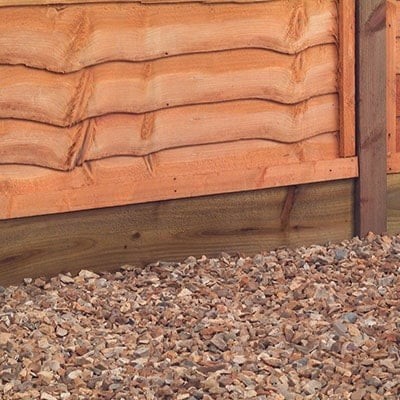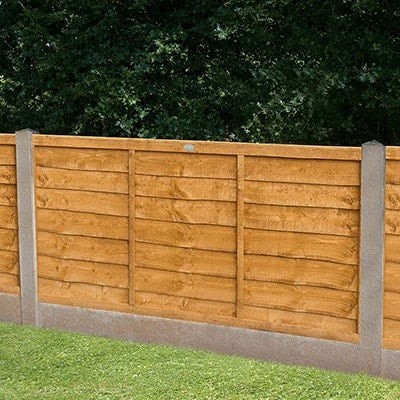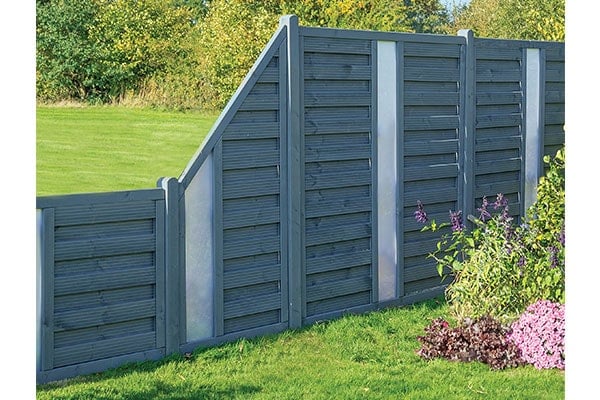
Whether considering your front garden or rear garden, fence height is probably the most important consideration of garden fence law. When choosing a new garden boundary or modifying an old one, it’s essential to get this right.
In this guide, we explain the legal requirements surrounding the height of your fence, consider the pros and cons of differently sized fence panels, and explain how to increase the height of an existing fence run.
Editor’s Note [02.11.23]:
Our guide to garden fence law and front garden fence height regulations was originally published on September 30, 2021. Today's update includes new sections - planning permission for a fence, fencing height, fencing materials, and related UK acts of parliament.
Garden Fence Law and Fence Height Regulations – What Are the Rules?
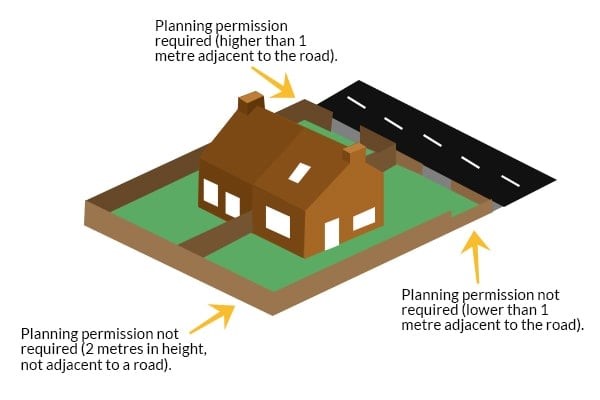

Garden fences, just like the buildings they belong to, are subject to planning regulations, so the first thing to ensure when erecting a new fence, or modifying an existing fence’s height, is that you’re not breaking garden fence laws.
Front Garden Fence Height Regulations
In a back garden, your fence should be no higher than 6.56 feet (2 metres), while front garden fence height regulations, or if next to a footpath or public road, should be no taller than 3.28 feet (1 metre).
Should you wish to erect a taller garden boundary fence, or if the land adjoins a listed building, be sure to contact your local authority to seek planning permission before you commence work. You should check your house deed or the land registry for the rules governing who owns which side of the fence and also to learn about whether joint responsibility is in place.


Fence Height Between Neighbours
The garden boundary fences in question might belong to you but it will also affect your neighbour’s property, so it’s only common courtesy to notify them of your intentions beforehand. After all, it is best to avoid boundary disputes.
If their garden is lower lying than your own, then choosing anything taller than your existing fence run might have a detrimental impact on them. Chances are that they will welcome a brand-new fence, but it’s always good to check first the fence height between neighbours to keep neighbourly relations cordial.
What Size of Fence Panel Should I Choose?
Fence panels are generally 6 feet (1800mm) wide, but their height can vary between 3 and 6 feet.
3ft Fence Panels
3ft fence panels are perfect for front gardens.
They are also suitable for rear gardens when positioned atop a low-lying wall, if you and your neighbours garden don’t require privacy, or to compartmentalise different sections of your own outdoor space.
4ft Fence Panels
4ft fence panels clearly denote your garden boundary lines but won’t obscure your views. If your back garden looks out onto beautiful scenery but you want a clear marker to show neighbours or passers-by where your land begins, a 4ft fence panel is ideal. Of course, they are also suitable to use in conjunction with a low-lying wall when forming a taller garden boundary.
5ft Fence Panels
Providing effective privacy and security, but not overbearing, 5ft fence panels are a popular choice. Yes, if you’re tall, you might still catch a glimpse of the neighbours but 5ft fencing still allows you to relax in your garden without the feeling that you’re on public show.
6ft Fence Panels
Ideal if your back garden is next to the street or public land, 6ft fence panels maximise your privacy and security. They also make a real standout garden feature. 6ft fence panels are our tallest size of fencing and are the preferred fence height between neighbours for many homeowners.
Other Considerations When Choosing Fence Panel Height
Fence Panels in Windy Areas
All other things being equal, the taller the fence, the more vulnerable it is to strong winds, so if you live in a particularly windy area, it might be advisable not to go too large.
Also, fence posts are designed to support fence panels 2ft shorter than themselves. For example, an 8ft fence post is used with a 6ft fence panel. If you decide to increase your existing fence’s height, you might need to consider replacing the posts too.
Sun and Natural Light
If you enjoy your garden being a sun trap, and having plenty of natural light, remember that taller, traditionally styled fence panels, without gaps, can potentially reduce both of these things.
Fence Panels, Children and Pets
If you have young children or pets, how will new fence panels impact them?
If they mostly spend time inside the garden, taller fence panels will keep them safer.
However, if they’re used to playing or roaming outside the confines of your property, a lower-lying fence allows you to keep an eye on them.
Planning Permission for a Fence
If you are looking to add a new fence to the perimeter of your garden in the UK, there are a few requirements for a planning permission for a fence. You cannot just throw up “any old fence” and think it is fine, there are numerous laws which regulate fencing erection.
Fencing Height
The height of your fence is a main planning consideration and subject to garden fence law. Generally, all fencing up to 2 metres does not require planning permission, but there are exceptions, which are:
1) If your house is next to a public road, front garden fence height regulations the height limit for fencing is reduced to 1 metre without planning permission
2) If your property borders a public highway (road, footpath, or bridleway), the fence cannot exceed 1 metre without permission
3) In the case of listed properties or properties in designated areas (like national parks, conservation areas, and Areas of Outstanding Natural Beauty), there might be additional restrictions or different rules
4) If there were existing fence rules established by a previous planning permission for the property, you would need to adhere to those
5) Boundary agreements might also impact neighbours fence height and design
Fencing Materials
Standard wooden or metal fencing will not require planning permission. If, however, you have “something out of the ordinary” in mind, such as a shiny fence (which could be reflective) or something which might cause a distraction it is best to talk with your local authority planning department.
Related UK Acts of Parliament
Several acts of parliament in the UK pertain to planning permission for a fence, garden planning and the wider aspects of garden fence law. These include land use, planning, and development. Some key acts include:
1) Town and Country Planning Act 1990 – this act is the main rulebook for building and land development. It contains all the legal information, which governs exactly what needs permission and what does not
2) Planning (Listed Buildings and Conservation Areas) Act 1990 - if you are near a historical spot or are in a conservation area, this one is for you. It could affect what you can do in your garden. Example areas include:
- Bath – the whole city is a World Heritage Site, so the city council is strict about changes
- York – with its rich history and ancient walls, it has many conservation areas
- Edinburgh – the New Town and Old Town are both UNESCO World Heritage sites, so they have many extra rules in place
3) Party Wall etc. Act 1996 – if you share a wall or boundary with your neighbour make sure you understand this act. It focuses on shared wall rights and responsibilities
4) Wildlife and Countryside Act 1981 - this mainly protects native flora and fauna. If you are looking to revamp your garden and it is a habitat for protected species, you might have problems. For example, you cannot erect a fence where there are certain types of nesting birds as you would need to avoid disturbing them
5) Anti-social Behaviour, Crime and Policing Act 2014 – this could apply if you have a fence that is a bit of an eyesore or poses a hazard. High hedges are another common area for scrutiny by this act, a complaint by a neighbour could force the hedge to be trimmed
6) Building Act 1984 – this primarily concerns the construction, extension, or alteration of buildings. However, certain aspects of this act might be relevant to fencing, especially if the fence construction might affect the structural integrity or safety of nearby buildings or public areas. For instance, if you are building a fence close to a public footpath, you would want to ensure it is sturdy and will not fall onto the pathway
How to Increase the Height of Fence Panels
The size of your fence panels needn’t be the same as the overall height of your garden boundary. You can increase the height of your fence run by other means too.
There are a number of reasons why you might want to increase the height of your fence. Usually, this will be to increase your garden’s privacy and security levels, but you can also do so to improve its aesthetic appeal.
Fence Toppers
An attractive fence topper is an effective, money-saving way to add a touch of glamour to structurally-sound but uninspiring fencing.
Slatted and trellis fence toppers are inspired choices as they allow a degree of natural light to pass through them. Trellis, of course, can be used to train and support climbing plants, creating a completely unique fence run, which is at one with the natural aspects of your garden. A prickly climbing plant has the added benefit of improving security. After all, burglars might think twice before attempting to scale a fence topped with thorns!
Find out more about garden trellis here.
As fence toppers typically measure under a foot (300mm), there are no planning issues when fixing them on anything up to and including a 5ft fence panel. For 6ft panels, be sure to check the exact combined measurement before buying.
Gravel Boards
With a height of about 6 inches (150mm), a gravel board can legally be used with any size of fence panel. As well as increasing the height of a fence, they provide other important benefits.
Firstly, by keeping the fence panels off the ground, they protect them from the ground moisture which leads to rot and fungal decay. This will extend the life of your fencing.
Secondly, gravel boards, combined with high-quality fence panels and fence posts, ooze aesthetic appeal. Choose concrete gravel boards for a contemporary garden design or pressure-treated wood for a more traditional, natural look.
For more information about fence toppers, gravel boards, and other fencing accessories, click here.
3ft, 4ft, 5ft and 6ft Fence Panels for Sale
Buy Sheds Direct are experts in garden fencing, so feel free to contact one of our friendly, UK-based customer service representatives if you need advice on fencing-related matters.
We stock 3ft, 4ft, 5ft and 6ft fence panels in a wonderful choice of designs, along with fence toppers, gravel boards and other fencing accessories. For all this and more, view our superb range of garden fencing now.
Conclusion
In wrapping up, choosing the right fence for your garden is not just about aesthetics but also about adhering to the UK's garden fence laws and regulations. It is crucial to be informed about the height restrictions, especially in relation to your property's position and the potential impact on neighbours.
While adding fence toppers or gravel boards can be a creative solution for increased privacy or aesthetic appeal, it is essential to respect the "boundary fence" regulations to maintain neighbourly harmony. Before deciding, always check with the relevant authorities to ensure compliance.
Contact Information – speak to us about planning permission for a fence
We hope you found our article about garden fence law and front garden fence height regulations interesting and informative. You now should understand the requirements for planning for a fence (including neighbours fence) and related regulations. If you need any further advice though, please contact our team.
For expert support why not contact Buy Sheds Direct using any of these methods:
- Calls - contact us at 0333 003 0514
- Emails - send e-mails using our contact page
- Live chat - real-time support using live text chat

